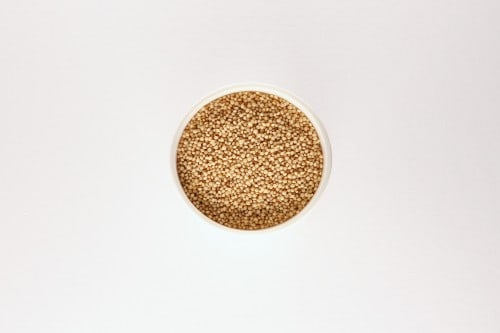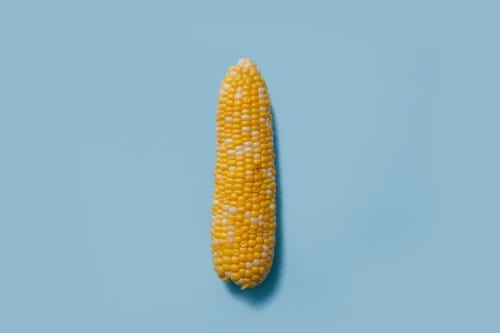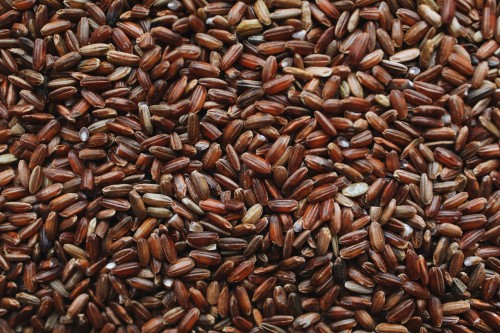Grains are a vital part of a healthy diet—they’re a plant food that provides us with essential minerals, vitamins, carbohydrates that fire up our muscles and brain with energy, and more.
They’re dietary staples in several parts of the world, such as China, India, Africa, and the Middle East. Today, grains are becoming more popular in Western countries
Several studies have linked grain consumption to health benefits, such as:
Lower heart disease risk
Better blood sugar control
Improved digestion
Protects against some cancers
Here are the 11 healthiest grains on Earth
1. Amaranth

Amaranth, a relatively little-known pseudo-grain, is a good source of nutrients across the board. It includes more than three times the average amount of calcium and is also high in iron, phosphorus, magnesium, and potassium.
Amaranth’s protein content of 13-14% makes it higher than most other grains, and it’s the only grain confirmed to contain Vitamin C.
One cup (246 grams) (8.5 ounces) of cooked amaranth contains:
- Calories: 252
- Carbs: 45 grams
- Protein: 9.2 grams
- Fat: 4.5 grams
- Fiber: 5 grams — 20% of the Daily Value (DV)
- Manganese: 91% of the DV
- Magnesium: 38% of the DV
- Iron: 29% of the DV
2. Millet
Millet is a gluten-free whole grain containing fiber, complex carbohydrates, amino acids, and a range of minerals. It was a staple food in many countries before the use of rice. Because of its high-quality protein and is rich in calcium, iron, and potassium.
One cup (174 grams) (6 ounces) of cooked millet boasts:
- Calories: 174
- Carbs: 41 grams
- Protein: 6 grams
- Fat: 2 grams
- Fiber: 2 grams — 8% of the DV (Daily Value)
- Manganese: 21% of the DV
- Magnesium: 19% of the DV
- Thiamine (vitamin B1): 15% of the DV
3. Sorghum
Sorghum is notably gluten-free, which is good news for anyone with celiac disease. It’s also known as milo and is smaller than corn but similar in looks, and can even be popped like corn.
Sorghum is also high in many nutrients and antioxidants.
half cup of 3.5 ounces (100 grams), uncooked sorghum provides:
- Calories: 329
- Carbs: 72 grams
- Protein: 11 grams
- Fat: 3 grams
- Fiber: 7 grams — 27% of the DV (Daily Value)
- Manganese: 70% of the DV
- Magnesium: 39% of the DV
- Copper: 32% of the DV
- Selenium: 22% of the DV
4. Teff
Teff is quinoa’s twin: it tastes and cooks nearly the same and is gluten-free. Teff has significantly more calcium and iron than other grains.
It is also a good source of protein, fiber, iron, and magnesium.
Per 3.5 ounces (100 grams), uncooked teff contains:
- Calories: 367
- Carbs: 73 grams
- Protein: 13.3 grams
- Fat: 2 grams
- Fiber: 8 grams — 32% of the DV (Daily Value)
- Manganese: 402% of the DV
- Copper: 90% of the DV
- Vitamin C: 98% of the DV
- Iron: 42% of the DV
- Zinc: 33% of the DV
5. Barley
Barley is a fiber powerhouse and a good source of phosphorous, copper, manganese, and selenium.
Barley also contains high amounts of B Vitamins and is not suitable for celiac disease people as it is not gluten-free.
Studies show that barley also helps prevent gallstones.
One cup (157 grams)(5.5 ounces) of cooked barley provides:
- Calories: 193
- Carbs: 44 grams
- Protein: 4 grams
- Fat: 1 gram
- Fiber: 6 grams — 24% of the DV (Daily Value)
- Selenium: 25% of the DV
- Iron: 12% of the DV
- Thiamine (vitamin B1): 11% of the DV
6. Quinoa

Did you know quinoa is a seed and not a grain? It’s widely considered a grain. High in Fiber and Protein, quinoa is rich in all the nine essential amino acids your body needs.
Moreover, quinoa is an excellent magnesium source and a good source of zinc, iron, and folate.
One cup (185 grams)(6.5 ounces) of cooked quinoa contains:
- Calories: 222
- Carbs: 39 grams
- Protein: 8 grams
- Fat: 4 grams
- Fiber: 5 grams — 21% of the DV (Daily Value)
- Magnesium: 28% of the DV
- Folate: 19% of the DV
- Zinc: 18% of the DV
7. Bulgur
Bulgur, also recognized as cracked wheat, is a type of grain that only requires a few minutes to cook. It also contains the most fiber out of any grain.
It is an excellent source of iron and magnesium and a powerhouse of fiber and protein; one cup contains nearly 75% of the dietary fiber you need for the day, and 25% of the protein you should get. Plus, it only takes a few minutes to cook.
One cup (182 grams) (6.5 ounces) of cooked bulgur contains:
- Calories: 151
- Carbs: 34 grams
- Protein: 6 grams
- Fat: 1 gram
- Fiber: 8 grams — 33% of the DV (Daily Value)
- Manganese: 48% of the DV
- Copper: 15% of the DV
- Magnesium: 14% of the DV
8. Rye
Rye, a wheat family member, has more nutrients per 100-calorie serving than any other whole grain. It is also high in fiber, giving it a lower glycemic index than wheat. However, compared to wheat, rye contains fewer carbs and more vitamins and minerals.
Per 3.5 ounces (100 grams), uncooked rye grains contains:
- Calories: 338
- Carbs: 76 grams
- Protein: 10 grams
- Fat: 2 grams
- Fiber: 15 grams — 60% of the DV (Daily Value)
- Manganese: 112% of the DV
- Copper: 41% of the DV
- Phosphorus: 27% of the DV
- Magnesium: 26% of the DV
9. Corn

Often categorized as a vegetable, corn is a grain. It is high in antioxidants and is a good source of fiber. While it may attract suspicion because of its use in unhealthy products such as high fructose corn syrup, it can be extremely healthy for you when it’s eaten whole. Studies show it also helps with blood sugar control.
One cup (164 grams)(6.5 ounces) of sweet yellow corn contains:
- Calories: 177 calories
- Carbs: 41 grams
- Protein: 5.4 grams
- Fat: 2.1 grams
- Fiber: 4.6 grams
- Vitamin C: 17% of the DV (Daily Value)
- Thiamine (vitamin B1): 24% of the DV
- Folate (vitamin B9): 19% of the DV
- Magnesium: 11% of the DV
- Potassium: 10% of the DV
10. Oats
Oats belong in the superfoods list because they are high in soluble fiber, have many health benefits like lower cholesterol, improve digestion, help manage a healthy weight, reduce risk of cardiovascular disease, and more.
They are high in protein and rich in calcium, phosphorus, and iron.
They are also gluten-free, and a cup of dry oats of 177 grams (6.5 ounces) contains:
- Calories: 120
- Protein: 4.6 gram
- Fiber: 3 grams
- Fat: 2.4 grams
- Carbs: 21 grams
- Iron: 58% of the DV (Daily Value)
- Zinc: 40% of the DV
- Folate: 25% of the DV
- Vitamin B1 (thiamin): 26% of the DV
11. Brown Rice

Brown rice is an excellent gluten-free source of manganese and a good source of selenium, B vitamins, and magnesium. It’s also high in fiber, rich in antioxidants, and helps stabilize blood sugar levels.
One cup of brown rice contains:
- Calories: 216
- Carbs: 44 grams
- Fiber: 3.5 grams
- Fat: 1.8 grams
- Protein: 5 grams
- Iron: 5% of the DV (Daily Value)
- Magnesium: 21% of the DV
- Phosphorus: 16% of the DV
- Zinc: 8% of the DV
- Copper: 10% of the DV
- Manganese: 88% of the DV
- Selenium: 27% of the DV